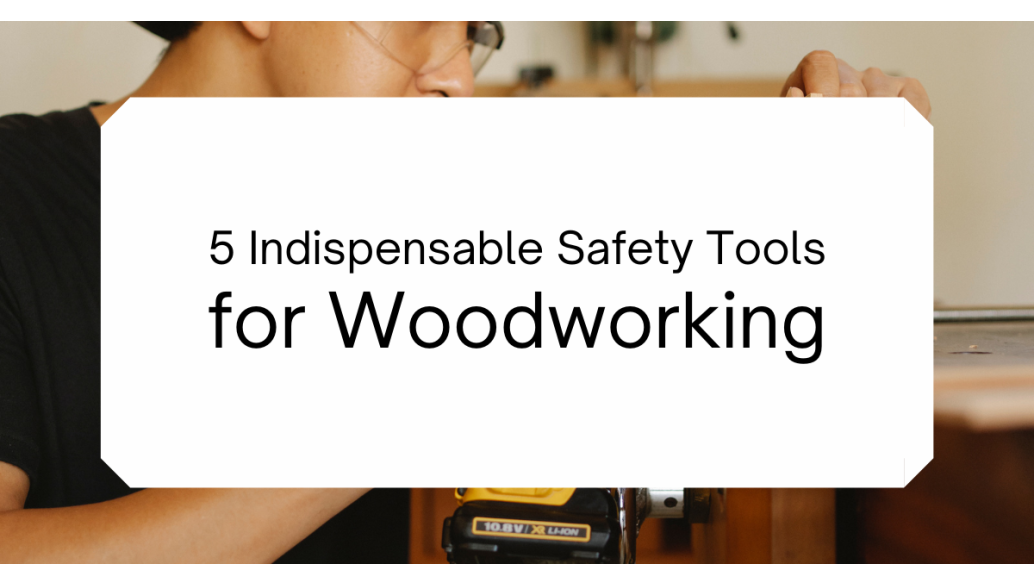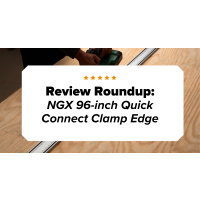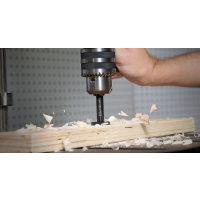Hello, everyone – Rod Bonham from Bora’s Product Development team here! I’ve been woodworking for years and even have my own dedicated shop, so sometimes I contribute my knowledge to the blog. I’ve learned a lot both in the shop and in my career – which has spanned over 20 years at various woodworking supply and manufacturing companies.
What I’m sharing today is knowledge I use every time I enter the shop – because I love working on projects and I want to keep doing it for years to come. Safety in the shop is irreplaceable and so are the parts you’re protecting. A good safety system and a variety of personal protective equipment (PPE) are essential not only to protect yourself against injury but to be able to enjoy every trip to the shop.
Here are my top 5 indispensable safety tools when I’m in the shop:
Safety glasses
When choosing safety glasses, make sure you look for safety protocols that the glasses conform to – for more on this, check out our blog on PPE for woodworking. I always look for a manufacturer with safety as a core part of their business. These kinds of glasses are impact-resistant and don't shatter when struck. You can get anti-fog, tinted, and even glasses that include ear plugs for hearing protection. A step further is to wear a face shield for full-face protection. You can even find glasses that include dust protection as well. My best advice is choosing a brand you can trust, and spend as much as the budget will allow.
Hearing protection
Hearing protection has come a long way since my woodshop days at school. If you think about it, you probably already use hearing protection if you own a pair of noise-canceling headphones or earphones. Again, make sure these are certified and state the safety standard used to approve them for sale. You might not always think ear protection is necessary, but it’s crazy how prolonged exposure to shop sounds – even if they don’t seem that loud – can damage your hearing over time. You can learn more about this in a previous blog we wrote.
For myself, I prefer not to have music in my earphones in the shop to keep distractions to a minimum, but there are lots of people who like to jam out while they’re woodworking. As long as you’re mentally present in every step of your project, it doesn’t matter if you have music playing.
Push sticks and push blocks
Now that we have our eyes and ears protected, it’s time to keep our fingers and hands in one piece. If you’ve done much woodworking, chances are you’ve had a close call (or two). That’s a scary moment – and if you took a moment to stop and rethink how you’re doing a task, that’s a good thing. A simple way to help you use power tools more safely is using push stick or push block.
Push sticks are great to use as you push work pieces past a blade – for example, when you’re using table saws and especially bandsaws. I like longer plastic sticks that have a V-shape molded on the front. The V-shape presses against the corner of the piece you’re moving so you can push it forward without getting your hand too close to the blade.
Push blocks work much the same way, but you use them when you’re moving a piece of material over a blade. Think jointers here – you press down on the top of the workpiece with the push block while it is against the fence and move it forward. On the underside of the block should be a rubberized material that has non-slip material. When you’re looking for a push stick or a push block, make sure it feels good in your hand. If it doesn’t feel good, you won’t like it – and if you don’t like it, you won’t use it. And you need to use it!
Jigs and fixtures
In addition to push blocks and sticks, there are several jigs and fixtures that improve your safety in the shop. Cross-cut sleds, hold downs, feather boards, and similar jigs enhance your push stick and push block setup help keep our hands away from spinning blades and provide extra support for the workpiece while it’s being machined. You can find these jigs in stores and online, or you can look for plans to make your own jigs and fixtures to suit a particular use or purpose.
If you don’t have the right jig, don’t take any chances – it’s better to wait until you have what you need to ensure your safety.
Time
My last recommendation is to take your time. You should never rush out to the shop with a spare half hour expecting to get the project across the line. That’s just asking for trouble. Too many woodworkers can tell you about a time where they rushed something and ended up injuring themselves.
Woodworking is meant to be about the process, so take the time to enjoy it. Allow yourself to take it slow – oftentimes all you need to do is remind yourself that what you’re doing is supposed to take time. When you let yourself slow down, you can be more present and give your full attention to every detail of your project, from the dimensions and cut list to the finishing techniques you’ll use. A well-executed project is satisfying, and it’s important to take the time to understand what you are about to attempt as well as the potential dangers.
Time in the shop is fun! Equip yourself to make it out in one piece as well. Happy woodworking!
Looking for more tips and tricks to help you on your woodworking journey? Sign up for our newsletter for all the latest in articles, videos, and product updates!






